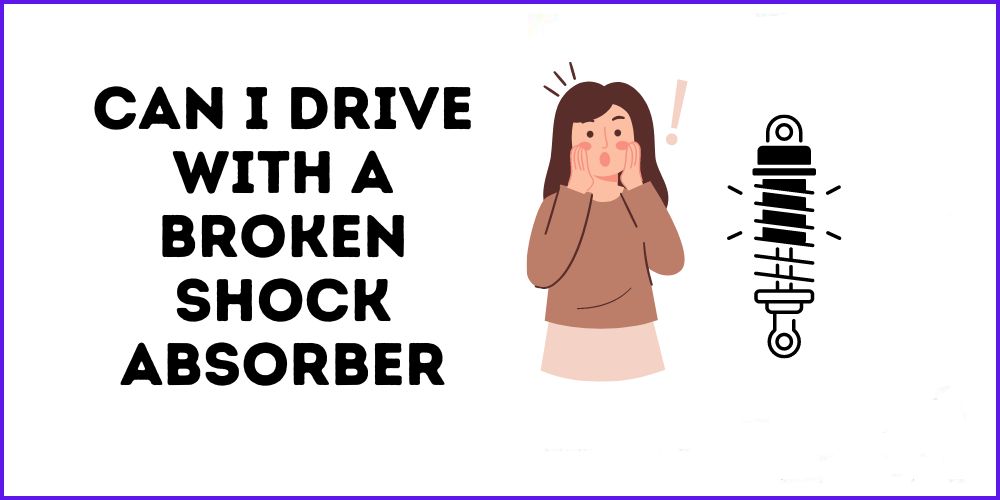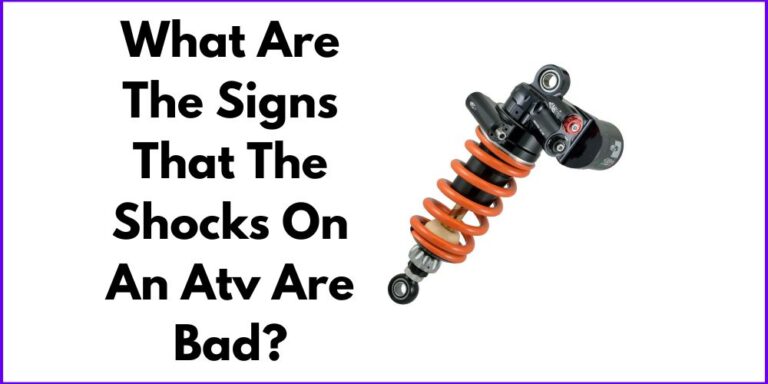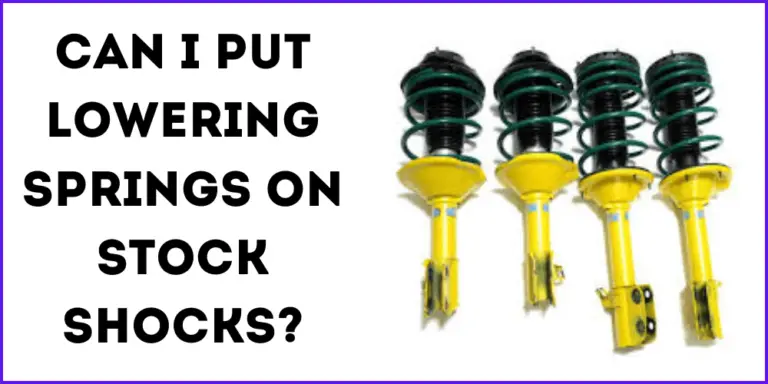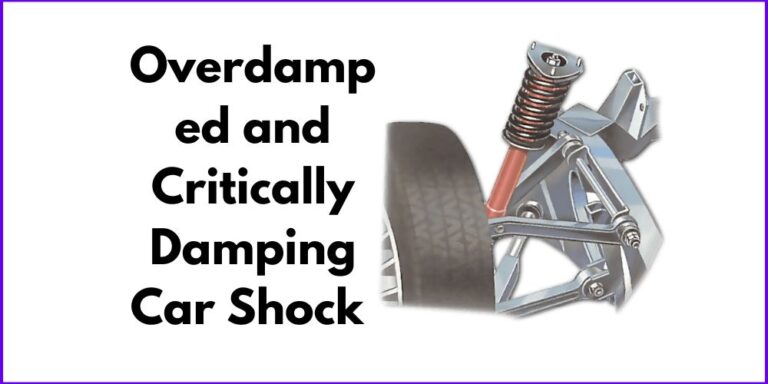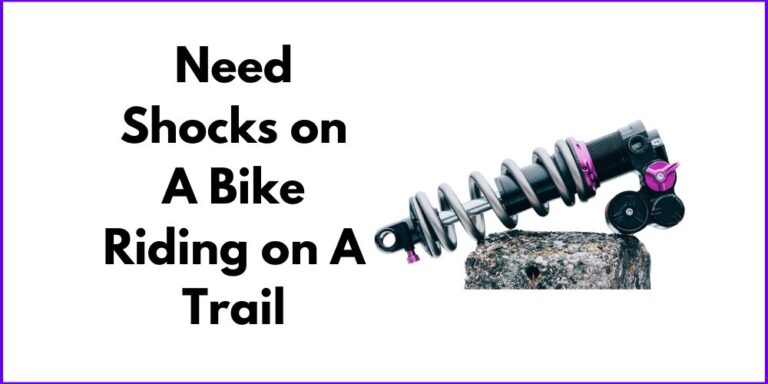Shock absorbers, also known as dampers, are an essential component of a vehicle’s suspension system. They are responsible for smoothing out the bumps and vibrations caused by uneven road surfaces, by converting the kinetic energy of suspension movement into thermal energy, which is then dissipated. This helps to ensure a comfortable ride and improves the handling and stability of the vehicle.
Shock absorbers are typically located between the wheels and the frame of the vehicle, and consist of a cylinder filled with oil or gas that is compressed and extended as the wheel moves up and down.
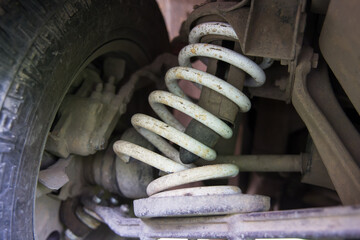
They work by using a piston to compress the fluid inside the cylinder, which creates resistance to the suspension movement. This resistance helps to control the rate at which the suspension moves and reduces the amount of bounce and sway that is transmitted to the vehicle’s occupants.
… but,
Can I Drive With A Broken Shock Absorber?
It’s not safe to drive with a broken shock absorber, it can decrease the handling, and braking performance and can make it difficult to control the vehicle which increases the risk of accidents, also it can cause uneven tire wear and put more stress on other suspension parts leading to their failure, ultimately it can cause instability and rough handling of the vehicle. It’s best to get the shock absorber repaired or replaced as soon as possible by a qualified mechanic to ensure the safety and longevity of your vehicle.
What are the symptoms of a faulty shock absorber?
Common symptoms of a broken shock absorber include:
- Bouncing or swaying while driving, especially on rough or uneven road surfaces
- Difficulty maintaining control of the vehicle, which can make it harder to steer or brake
- Uneven tire wear, which can cause the tread to wear down more quickly on one side of the tire
- Nose dive when braking
- Excessive bouncing after hitting a bump
- The vehicle bottoms out on bumps
- Leaking fluid or oil around the shock absorbers
- The car feels unstable at high speed
It’s important to note that some of these symptoms can also be caused by problems with other suspension components or tire issues, so it’s always best to have a qualified mechanic inspect your vehicle to identify the exact cause of the problem.
What happens if you drive with a broken shock?
Driving with a broken shock absorber can present a number of risks, including:
- Decreased handling and braking performance. A broken shock absorber can make it harder to control the vehicle, especially on rough or uneven road surfaces. This can increase the risk of an accident, especially at high speeds or in emergency situations.
- Increased wear and tear on other suspension components. A broken shock absorber can put more stress on other suspension parts, such as the springs and ball joints. This can lead to premature failure, which can cause additional problems and costly repairs.
- Unsafe Ride quality. With the broken shock absorber, the ride of the vehicle will become much less comfortable and will cause excessive bouncing, swaying, and vibration, which can cause discomfort and fatigue for the driver and passengers.
- Uneven tire wear. A broken shock absorber can cause uneven tire wear, which can lead to decreased tire life and the need for premature replacement.
- Reduced vehicle stability at high speed. With the damaged shock absorber, the vehicle can lose stability on the road, which could make it hard to control the vehicle at high speeds, which can be dangerous.
All in all, a broken shock absorber can cause a variety of problems that can affect the safety and performance of the vehicle. That’s why it’s important to have it fixed as soon as possible if you suspect a problem.
How to check for a broken shock absorber?
There are a few different ways to check for a broken shock absorber, including:
- Visual Inspection: You can visually inspect the shock absorbers for signs of wear or damage, such as leaks, dents, rust, or any other physical damage. If you see any signs of damage or wear, it’s a good indication that the shock absorber may be broken and should be inspected further by a qualified mechanic.
- Bounce Test: To perform a bounce test, apply pressure to one corner of the car, then release. If the car continues to bounce more than two times, it may indicate a worn or broken shock absorber. Perform this test on all four corners of the vehicle, to check all the absorbers.
- Jacking up the vehicle: Jack one corner of the vehicle, and then try to push down and release. If the vehicle continues to move and bounce, it’s a sign that the shock absorber may be worn or damaged. Repeat this test on all four corners of the vehicle.
- Checking if the vehicle is leaning: Look at the vehicle from the front or rear and see if the vehicle is leaning towards one side, this could indicate a worn or damaged shock absorber on that side.
It’s important to note that these are general guidelines, and it’s always best to have a qualified mechanic inspect your vehicle to identify the exact cause of the problem. If you suspect you have a broken shock absorber, contact a mechanic as soon as possible for a proper diagnosis and repair.
FAQs
How long can you drive with broken shock absorbers?
It is not recommended to drive for an extended period of time with a broken shock absorber, as it can cause a variety of problems that can affect the safety and performance of the vehicle. If you suspect a problem with one or more of your shock absorbers, it’s best to have them inspected and repaired as soon as possible.
Is it safe to drive with worn shock absorbers?
It is not considered safe to drive with worn shock absorbers. Worn shock absorbers can reduce handling and braking performance, increase wear and tear on other suspension components, and make the ride less comfortable and stable. It is recommended to have worn shock absorbers replaced as soon as possible.
Can a car run without shock absorbers?
A car can technically run without shock absorbers, but it would not be safe to drive. Without shock absorbers, the wheels could not maintain proper contact with the road, and the vehicle’s handling and stability would be severely compromised. It’s recommended to have them repaired or replaced as soon as possible.
What are the signs of worn shock absorbers?
Some of the common signs of worn shock absorbers are excessive bouncing after hitting a bump, uneven tire wear, the vehicle bottoming out on bumps; the car feeling unstable at high speed, sagging of one corner of the vehicle, and difficulty maintaining control of the vehicle.
What noise does a broken shock absorber make?
A broken shock absorber usually does not make any noise, however, a worn shock absorber may make a thumping, clicking, or clunking noise when driving over bumps.
Finally
In conclusion, maintaining the shock absorbers is essential for the safety and performance of a vehicle. Shock absorbers play an important role in smoothing out the bumps on the road and help to ensure a comfortable ride and a stable and safe vehicle. Broken or worn shock absorbers can lead to a variety of problems that can affect the handling, braking performance, tire wear and suspension, and overall stability of the vehicle.
It’s important to have them inspected and repaired or replaced as soon as possible. If you suspect a problem with your shock absorbers or if you’re unsure about their condition, it’s best to contact a qualified mechanic for an inspection and repair or replacement. It is essential to keep the shock absorbers in good condition to ensure a safe and pleasant ride.

